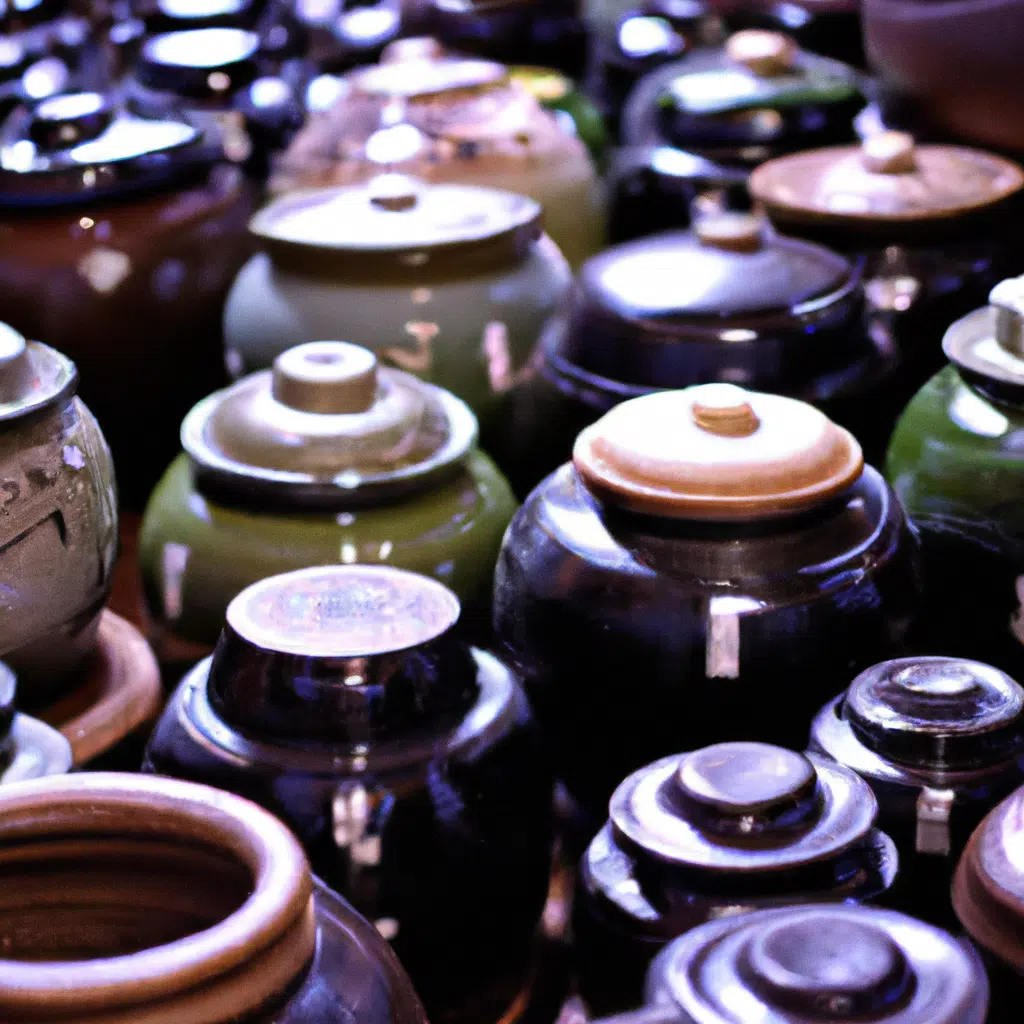
In the realm of culinary delights, Korean cuisine stands out for its unique flavors and diverse range of dishes. While many people are familiar with popular Korean fermented foods like kimchi, there is a whole world of lesser-known fermented delicacies waiting to be discovered. In this article, we will delve into the mysterious world of Korean fermented foods you’ve never heard of, exploring their origins, preparation methods, and health benefits. From the pungent yet flavorful jeotgal to the tangy and aromatic doenjang, get ready to embark on a journey of culinary exploration.
1. Jeotgal: The Hidden Gems of Korean Fermentation
Jeotgal, a broad term for various salted and fermented seafood, is a staple in Korean cuisine. This lesser-known category of fermented foods includes a wide array of delicacies, such as salted shrimp, anchovies, and oysters. Jeotgal is prepared by layering seafood with salt and allowing it to ferment for several months. The result is a pungent and intensely flavored condiment that adds depth and complexity to Korean dishes. From the salty and briny taste of saeujeot (salted shrimp) to the umami-rich flavor of myeolchijeot (salted anchovies), jeotgal offers a unique culinary experience.
2. Gochujang: The Fiery Red Fermented Paste
No exploration of Korean fermented foods would be complete without mentioning gochujang. This fiery red fermented chili paste is a quintessential ingredient in many Korean dishes. Gochujang is made by fermenting a mixture of chili peppers, glutinous rice, fermented soybeans, and salt. The resulting paste is spicy, slightly sweet, and packed with umami flavors. Its versatility makes it a favorite condiment for bibimbap, tteokbokki, and countless other Korean dishes. With its distinctive taste and vibrant color, gochujang adds a punch to any meal.
3. Doenjang: The Soul of Korean Soups and Stews
Doenjang, also known as Korean soybean paste, is a fundamental ingredient in Korean cuisine. This fermented paste is made by mixing soybeans with salt and fermenting the mixture for months or even years. Doenjang possesses a rich and savory flavor, making it an essential component in various Korean soups, stews, and sauces. From the hearty flavors of doenjang jjigae (soybean paste stew) to the mouthwatering taste of ssamjang (a dipping sauce made with doenjang), this versatile ingredient adds depth and complexity to Korean dishes.
4. Makgeolli: The Traditional Rice Wine with a Twist
Makgeolli, a traditional Korean rice wine, has been enjoyed for centuries. This milky-white, slightly fizzy beverage is made by fermenting a mixture of rice, water, and nuruk (a fermentation starter). Makgeolli offers a unique drinking experience, with its tangy and slightly sweet taste. It is often served in traditional bowls and paired with savory Korean pancakes. With its low alcohol content and delightful flavors, makgeolli is a beloved drink that embodies the spirit of Korean fermentation.
5. Cheonggukjang: A Nutritious Fermented Soybean Stew
Cheonggukjang, a fermented soybean stew, is not for the faint of heart. This pungent and robust dish is made by fermenting soybeans with Bacillus subtilis, a probiotic bacterium. The fermentation process enhances the nutritional value of the soybeans, making cheonggukjang a powerhouse of protein, vitamins, and minerals. Despite its strong aroma, cheonggukjang is highly regarded for its health benefits and is often enjoyed with a bowl of rice and various side dishes.
6. Sikhye: The Refreshing Sweet Rice Punch
Sikhye is a traditional Korean sweet rice punch that is often enjoyed as a dessert or a refreshing beverage. This fermented drink is made by fermenting cooked rice with malted barley and sweetening it with sugar or honey. Sikhye has a delightful balance of sweetness and subtle fermentation flavors. It is commonly served chilled and garnished with pine nuts. With its thirst-quenching qualities and unique taste, sikhye is a popular choice during the hot summer months.
7. Yangnyeomjang: The Flavorful Fermented Soy Sauce
Yangnyeomjang, a type of fermented soy sauce, is a key ingredient in Korean cuisine. This sauce is made by fermenting soybeans with salt and water for an extended period. The resulting soy sauce is rich, savory, and packed with umami flavors. Yangnyeomjang is used as a seasoning in various Korean dishes, adding depth and complexity to marinades, stir-fries, and dipping sauces. Its distinct taste sets it apart from other soy sauces, making it a must-have in any Korean pantry.
In conclusion, the world of Korean fermented foods goes far beyond the popular kimchi. From the pungent jeotgal to the fiery gochujang, each fermented delicacy offers a unique flavor profile and cultural significance. Exploring these lesser-known fermented foods allows us to appreciate the rich culinary heritage of Korea while enjoying the health benefits they provide. So, step out of your comfort zone, embrace the unknown, and indulge in the mysterious world of Korean fermented foods. Your taste buds will thank you for the adventure!
